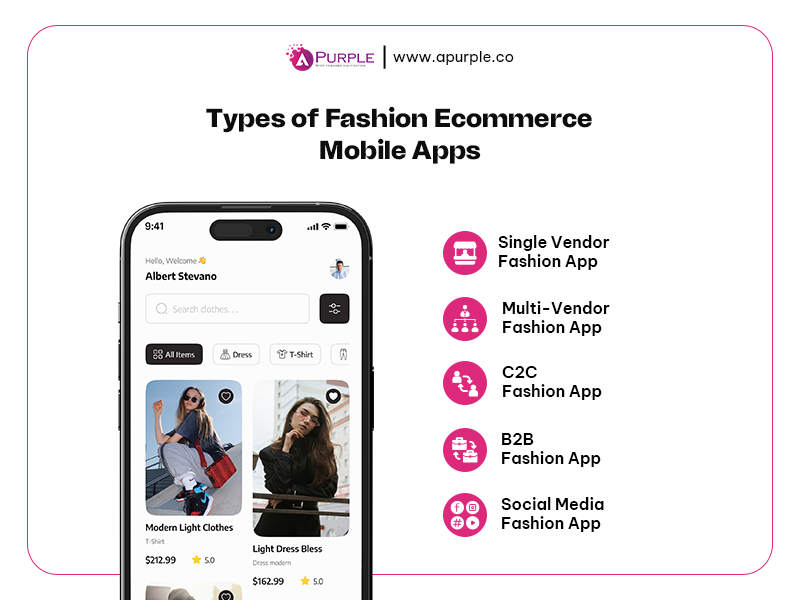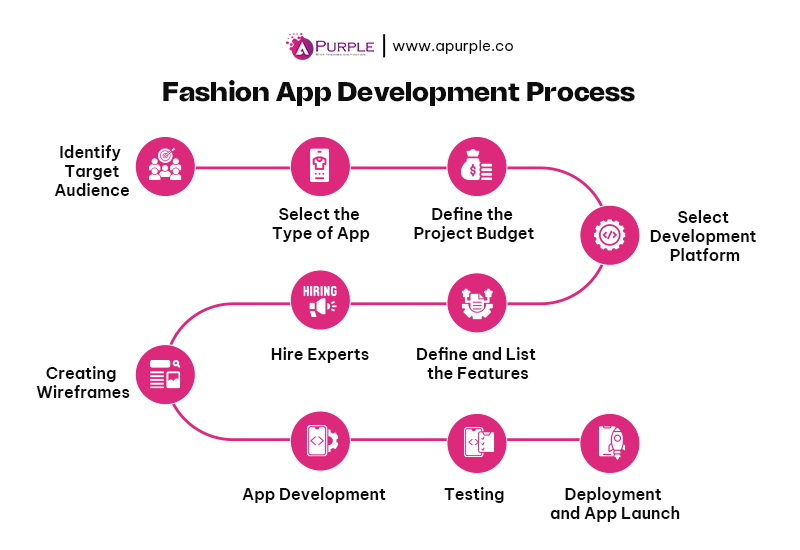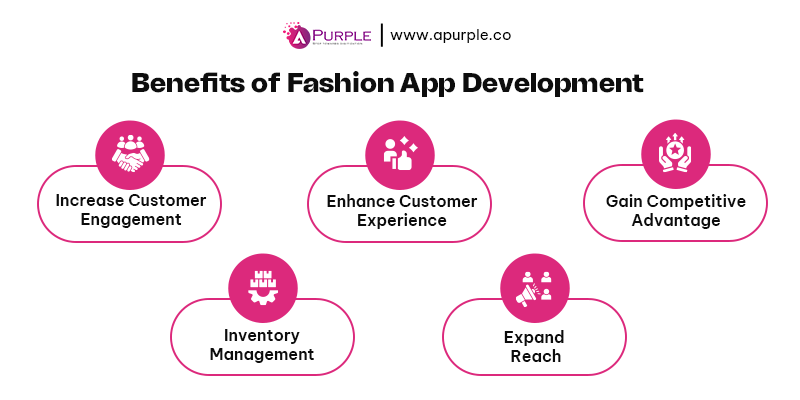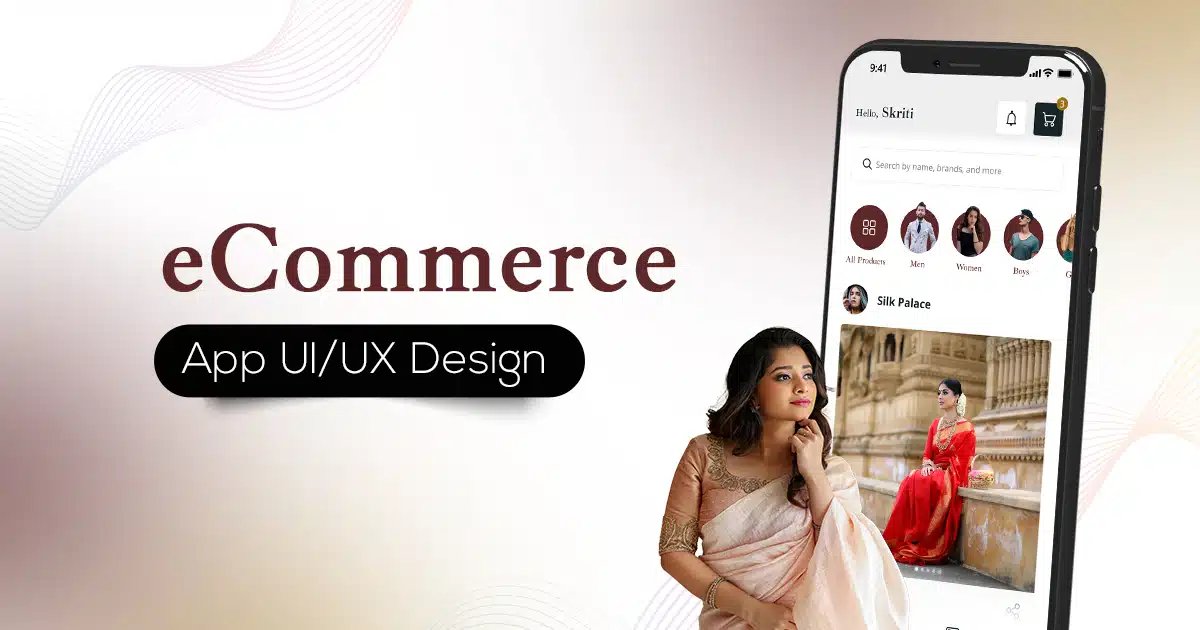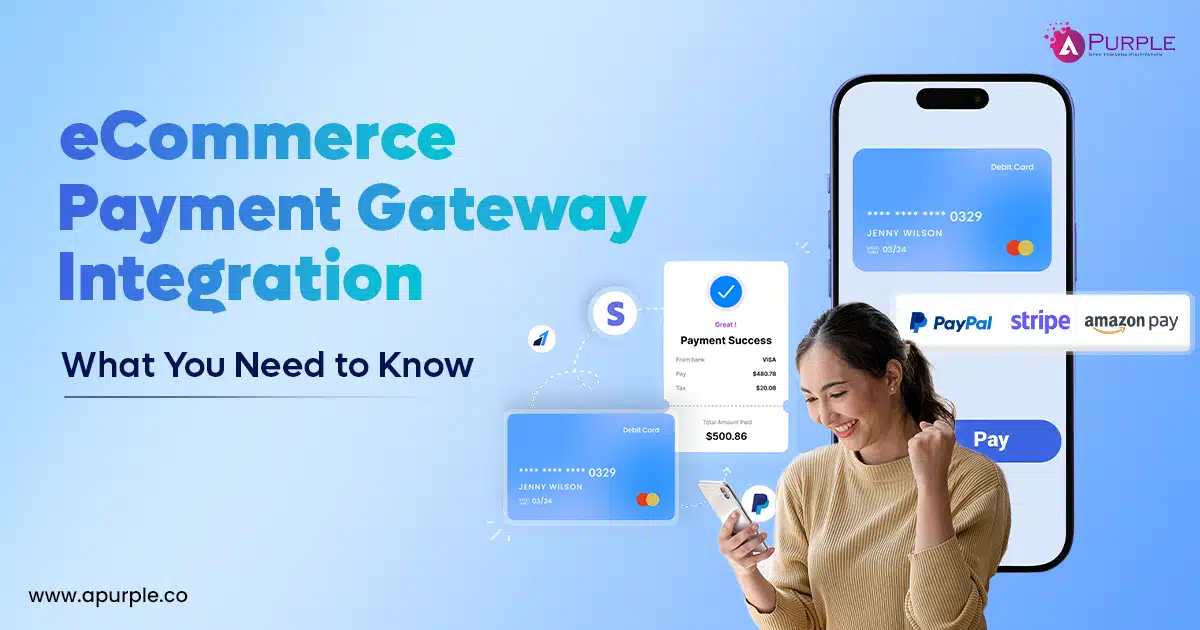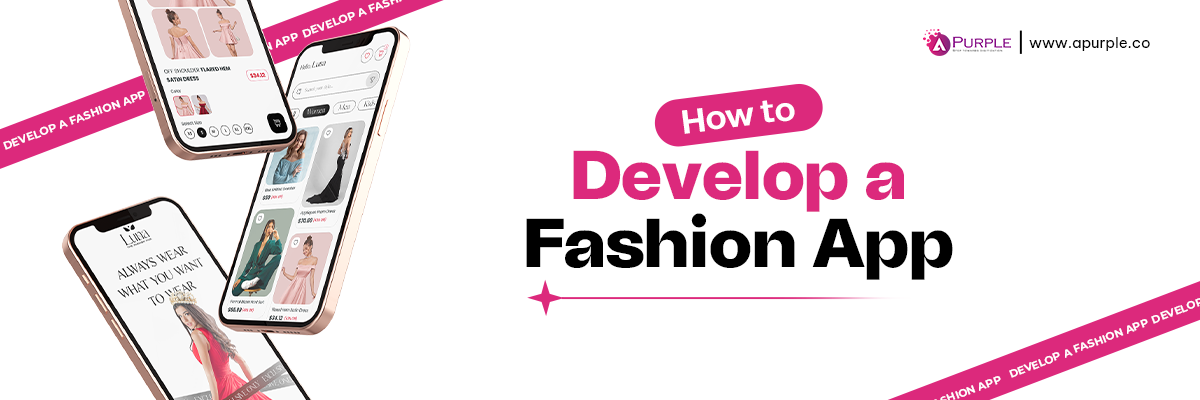
Are you a retail business owner struggling to expand your online presence or integrate modern e-commerce capabilities? Do you manage an e-commerce platform and face challenges with inventory management from multiple brands, or do you need a more streamlined user experience to stay competitive? A fashion app development platform is the strategic solution you need to solve these challenges.
Smartphones and the internet have created growth opportunities for the fashion and ecommerce industry. At a time when the fashion industry is rapidly evolving, embracing mobile technology and opting for app development is no longer just an option but a necessity. Several well-known luxury fashion brands like Zara, Nike, Hermes, and others have implemented mobile applications to digitalize their business.
A dedicated fashion app can modernize your sales approach, enhance market reach, and provide sophisticated analytics tools that are crucial for making informed business decisions. It also offers a way to seamlessly integrate diverse brands and improve the shopping experience, keeping you ahead in a competitive market.
This guide will walk you through the process, benefits, challenges, and solutions to create an engaging fashion app that boosts the shopping experience, streamlines operations, and strengthens your brand visibility in the highly competitive e-commerce segment.
What is a Fashion App Development?
Fashion app development refers to creating an enhanced mobile app to deliver comprehensive fashion-related services. This includes custom product suggestions, inspiration for clothing styles, shopping assistance, market trends, and also social networking functionalities. The modern ecommerce and fashion industry is now being shifted to online platforms where users can get their desired products at convenience using web and mobile apps. It comes with various necessary features like product sorting, outfit suggestions, similar products, a product cart, smooth payments, favorites, notifications, easy search, and many more. This app has various advanced features, such as facial and image recognition, automatic product suggestions using AI/ML algorithms, AR/VR for virtual try-ons, and others.
What are the Different Types of Fashion eCommerce Mobile Apps?
The fashion industry has evolved with the expansion in the technological world. Diverse fashion startups allow users to shop from a mobile app that can be accessible from anywhere easily. So, to start an eCommerce fashion business in this digital era, it is important to select the ideal solution from the various types of fashion apps. There are various types of fashion and clothing app development solutions available:
1. Single Vendor Fashion App
This fashion mobile app development solution is also considered the business-to-customer model. This is the platform where businesses can create an online platform dedicated to their brand and simplify the sales funnel by reaching a wide customer base. Using this, customers can purchase their required product with a few taps with in-app payment facilities.
For example, H & M and Zara’s app is dedicated to its brand and allows users to search for their required collections, purchase, pay through apps and track orders.
Pre-Launch Checklist:
- Business Model & Brand Strategy
- Product Management
- Payment Gateway Integration
- Order Management System
- User Reviews & Ratings
Post-Launch Checklist
- App Store Optimization (ASO)
- Performance Analytics
- Customer Support Setup
- Marketing & Promotions
- Bug Fixes & Updates
2. Multi-Vendor Fashion App
Amazon, Flipkart, Myntra, and other popular websites and apps work on this model. The multi-vendor fashion app is a platform where different businesses, emerging startups, and small brands can list their products and sell them online. This helps customers in getting a diverse range of products from different brands under a single platform.
For example, Amazon and Myntra host multiple brands offering different types of products like clothing, accessories and others. It involves brand-specific stores, offers, AI-driven recommendations and a streamlined shopping experience.
Pre-Launch Checklist:
- Vendor Onboarding Process
- Marketplace Features
- Commission & Payment System
- Product Review & Rating System
- Order Management System (OMS)
Post-Launch Checklist
- Vendor Support & Training
- Marketing for Vendors
- Customer Reviews & Feedback
- Scaling & Infrastructure
- User Acquisition & Retention
3. B2B Fashion App
A business-to-business fashion web and mobile app is specifically used by various wholesalers, manufacturers, and retailers who offer products and services to the same segment. This provides a streamlined solution that helps in managing supply chain and inventory management.
For example, FashionGo and Tundra are digital manufacturers and wholesaler platforms connecting various brands and retailers to buy directly from fashion manufacturers.
Pre-Launch Checklist:
- Target Market Research
- Bulk Ordering & Wholesale Pricing
- Supply Chain Integration
- Payment & Credit System
- Customer & Vendor Dashboard
Post-Launch Checklist
- Trade Show & Networking
- CRM & Lead Generation
- Continuous Feature Updates
- Technical Support for Business Clients
- International Expansion
4. C2C Fashion App
Customer-to-customer fashion applications are a model where individuals can trade their products with each other by using an online marketplace. Compared to the traditional ecommerce model, this model has reduced the mediators like retailers and wholesalers.
For example, Vinted, is a peer-to-peer marketplace to buy and sell pre-liked fashion products, featuring community-driven and secured transactions. In short, it is the type of solution where second-hand products can be sold and purchased.
Pre-Launch Checklist:
- Marketplace Regulations & Policies
- User Authentication & Profiles
- Secure Payment & Escrow System
- Product Listing & Discovery
- Messaging System
Post-Launch Checklist
- Community Engagement & Support
- User Feedback Loop
- Promotions & Incentives
- Trust & Reputation System
- Analytics & Growth
Read also: Transform your fashion app concept into a thriving business by understanding how to start an online clothing store
5. Social Media Fashion App
Fashion apps based on social media focus on providing various products and interacting with followers and friends. These apps are created with diverse social media features, such as user profiles, content sharing, and followers, which aim to provide users with a more engaging shopping experience.
For example, LIKEtoKNOW.it is a shopping platform linked with influencers, allowing users to purchase their required products seen on Instagram and other social media platforms. Another example is ShopLook, a social styling platform where different users can create and share fashion mood boards while directly shopping for outfits.
Pre-Launch Checklist:
- Social Features & Integration
- Content Creation & Sharing Tools
- In-App Shopping & Direct Purchasing
- Influencer Partnerships
- Personalized Fashion Feed
Post-Launch Checklist
- Engagement Analytics
- Regular Content & Collaboration Updates
- User-Centric Marketing Campaigns
- Community Building
- App Optimization & Feedback Loop
Explore our comprehensive guide to profitable ecommerce business ideas for entrepreneurs.
How to Develop a Successful Fashion App?
To ensure a streamlined flow of the ecommerce and clothing app, it is important to create a fashion app with all the necessary and advanced features with required customizations. Fashion app development can be done by following a predetermined procedure.
1. Identify Target Audience and Goals
It is important to define the objective of your fashion app and identify the target segment and market trends. This step also includes the required features, the purpose of the app, and the platforms it supports.
Checklist to Identify Target Audience and Goals
- Define the core objective of the fashion app (e.g., shopping, resale, rentals, styling)
- Conduct market research to analyze trends and user preferences
- Identify the target audience (age, gender, region, preferences)
- List essential features based on customer expectations
- Choose the platforms (iOS, Android, Web) to launch the app
2. Select the Type of the Fashion App Development Solution
After defining the target audience and goals, choosing the required development model for the fashion apps is necessary. This can be done by considering the business structure and budget.
Most common models of ecommerce fashion app development:
- Business to Business
- Business to Consumer
- Consumer to Consumer
- Single vendor and Multiple Vendor
Checklist of Select the Type of the Fashion App Development Solution
- Determine the suitable business model (B2B, B2C, C2C, Single/Multi-vendor)
- Analyze competitors to select a suitable marketplace structure
- Ensure scalability for business growth
- Consider budget and development timeframe
- Define monetization strategies (subscriptions, commission-based, ads)
3. Define the Project Budget
Before finalizing anything, it is necessary to set the budget for an ecommerce fashion app development solution. This can be finalized based on the required functionalities, customizations, and integrations.
Checklist of Define the Project Budget
- List features to balance cost-effectiveness
- Choose between in-house development, outsourcing, or freelancers
- Allocate budget for design, development, testing, and marketing
- Keep a buffer for unexpected costs and feature expansions
4. Select the Development Platform and Tech Stack
Now, it is time to select the preferred development platform for fashion apps (mainly iOS and Android) for startups, small businesses, and emerging organizations. It is also important to determine the type of app development, such as native and cross-platform solutions. It is because most of ecommerce traffic originates from smart devices with dedicated fashion apps. So, it is important to select the ideal development technology to create a high-performing mobile app based on the selected platform.
Checklist of Select the Development Platform and Tech Stack
- Decide on native (Swift/Kotlin) or cross-platform (Flutter/React Native) development.
- Choose a robust backend (Node.js, Python, PHP) and database (MongoDB, MySQL)
- Ensure API integrations for third-party tools (payments, shipping, analytics)
- Select cloud services for scalability (AWS, Firebase, Google Cloud)
- Implement secure authentication methods (OAuth, OTP, Biometric login)
5. Define and List the Features
This step involves listing the required features for the fashion app to ensure an uninterrupted user experience. An integrated app helps users in finding the required features easily.
Checklist to Define and List the Features
- Include basic features like login, product listings, cart, checkout, and order tracking.
- Integrate advanced features like AI recommendations, AR try-ons, and voice search.
- Ensure smooth navigation and UX for effortless shopping
- Provide multi-currency, multi-language, and localization support
- Set up real-time notifications for offers, orders, and customer support
There are several necessary features, which include:
- Registration and Login
- Product Listing and Categories
- Search Filters
- Cart and Checkout
- Payment and Tracking orders
- Notification and Support
Advanced Features
- Custom product recommendations
- Multi-currency and multi-language support
- AR and Virtual try-on
- Loyalty programs
- Voice search and assistants
- Advanced analytics
6. Hire Experts
Ecommerce fashion application development for diverse startups, small businesses, and emerging organizations can be smoothly done by hiring experienced developers. Experts like aPurple, provide tailored services to meet specific business requirements. They offer end-to-end fashion app development services to transform routine operations.
Some of them are:
- Custom ecommerce app development
- Shopify app development
- Magento e-commerce app development
- BigCommerce app development
- WooCommerce app development
- Advanced analytics
Checklist on hiring experts
- Research and shortlist experienced fashion app development companies
- Check their portfolio, client reviews, and industry expertise
- Ensure they provide end-to-end development, from design to deployment
- Discuss customizations, integrations, and scalability options
- Establish a clear communication and project management structure
7. Creating Wireframes
After hiring ecommerce app development service providers, creating prototypes and wireframes can be done based on the project needs and specifications. The UI/UX of the app can be created by considering the latest market trends and ensuring a smooth user experience. It is important to consider the fact that, a fashion app design should be easy to navigate and compatible with the required platforms.
Checklist to Create Wireframes
- Define a user-friendly app flow and navigation structure
- Develop interactive prototypes for testing UI/UX
- Prioritize mobile responsiveness and cross-platform compatibility
- Get stakeholder feedback before finalizing designs
- Ensure the UI aligns with modern fashion industry trends
8. Frontend and Backend Development
Once the design is finalized, the app is processed to the development phase. This involves setting up the database, frontend and backend app development.
Checklist for Frontend and Backend Development
- Select a responsive front-end framework (React, Vue.js) for a seamless UI
- Set up a scalable backend to handle high-user traffic
- Ensure API security and encryption for transactions
- Implement real-time order tracking and user authentication
- Optimize code for high performance and minimal load times
9. Testing
After creating the full-fledged fashion app, it is important to conduct thorough testing and quality assurance to ensure uninterrupted performance, reliability, usability, compatibility, and security. The specific testing types and checklist include:
- Functionality testing
- Performance testing
- Usability testing
- Compatibility and responsiveness testing
- Security testing
- Loading and installation testing
10. Deployment and App Launch
Once the testing of the app is completed, bugs(if found) are resolved to ensure uninterrupted user experience and performance. When satisfied with the app and ensuring it is bug-free, the fashion app for startups is to proceed with the official launch and deployment in the specific stores. A smooth app launch can be done by the following:
- Submission of the app to the store
- ASO (App Store Optimization) and Play Store optimization
- Promotion and Marketing
- Tracking user downloads and analytics
- User support and assistance
- Rating and review management
- Improvements and continuous updates
Key Features of Fashion Mobile App
An e-commerce app development solution is of no use when it doesn’t have the required features. So, it is important to implement the required features and functionalities into the custom fashion app. These features are specified based on users of the app, mainly admin, merchant or startups and customers.
1. Admin Features
Profile Creation and Dashboard
Creating an enhanced and updated profile of the admin helps in establishing the interactive dashboard to manage everything in one place. This centralized and easy-to-understand dashboard helps in smooth tracking.
Category Management
Admins can smoothly manage and update the fashion product categories. This helps admins to monitor the inventory and merchants add the products in specific categories. With this, the admin ensures the convenience of customers at the time of finding their required products.
Customer Management
Admins can smoothly manage and monitor the customers to stay updated with their behavior. It includes user profiles, location, repeat orders, history of orders, shipping details, payments, feedback, and providing custom alerts to boost their buying experience.
Merchant and Store Management
This feature helps admins to manage merchants, stores, and fashion startups with a centralized system. Admin can monitor the products, orders, and feedback and manage diverse existing and new merchants easily.
Marketing and Promotion Management
Admin can manage product marketing, sale campaigns, and promotions as per the requirements of merchants, fashion startups, and small businesses. Based on the set guidelines and specifications, admins take action on the request.
Payment Management
Fashion ecommerce mobile app development can be done by smooth ecommerce payment gateway integration and establishing clear commission mechanisms. As per the set commission on every sale of the products by merchants, admins keep the commission. On the other hand, admins can also manage customer payments and ensure smooth payment processing.
Third-party Channel Management
Admins can manage various third-party tools and platforms like CMS, supply chain management, marketing, and others to ensure easy management. This helps in managing various platforms in one go without any disturbances.
Merchant and Customer Support
To ensure smooth support, admins can stay updated with the submitted support queries, and tickets submitted by various users, merchants and fashion small businesses. Admins can monitor the support conversations of customers with smart assistants and respond to solve the queries or pass the queries to support staff.
2. Merchant Features
Authentication and Registration
Store owners, merchants, and startups can create their accounts to list their products for the public. They can register by filling in the necessary details in the fashion app and starting their online fashion business.
Edit and Manage Profile
Fashion startups and store managers can create their profiles and edit them as and when required. This helps in making the profile updated and helping users to understand the merchants.
Manage and Add Products
It is important to manage and add new fashion products in real-time. This feature enables store managers and fashion startups to add their products based on the categories and update the products. This also enables maintaining stock levels and updating the inventory before it becomes out of stock.
Manage Product Orders
After a customer orders the products, the concerned merchant receives alerts and updates about the order fulfillment. Merchants start processing orders based on the inventory availability and deliver the product within the timeline.
Reports and Analytics
Various fashion startups can get real-time analytics and reports about their orders, revenue, sales, order returns, and repeat customers. This helps them stay updated with the performance and market responsiveness. Reports and analytics provide quick insights to fashion startups and small businesses that help them take proactive measures and resolve the aspects where they are lacking.
Notifications and Alerts
Merchants, store managers, fashion small business owners and startups can get real-time alerts about any updates, orders, customer support requirements, returns or refund requests and others.
3. Customers
Sign up and Login
To start with the fashion app, users are required to sign up and authenticate themselves. They can perform this by using their email IDs, contact details, and social media accounts. Users can log in with their username or email address and passwords.
Alerts and Notifications
Users can get personalized alerts and notifications about their purchases, offers, new products, and others to make them updated. This helps in making users engaging and driving sales.
Product Categories
There are a bunch of products listed on the app which makes it hard for users to find their required products. Distributing the products based on the categories helps users in searching for the required products conveniently. These features enhance the user experience with an easy-to-navigate product display process.
Search and Filter
The search and filter feature helps users to implement their required filters to ensure smooth browsing. This helps in boosting the user experience and getting the relevant results.
Product Details
Users always seek product details before they purchase anything to understand the specifications. After browsing the product, users check the description of the product, images, size, fabric, and more.
Offers and Discounts
To attract users and ensure their long-term commitment, discounts and offers play a major role. This feature displays upcoming and ongoing promotions and offers to users that aim to create intent of purchasing specific fashion products.
Product Reviews and Ratings
Users can check reviews and ratings posted by past users before making product purchase decisions. This helps in understanding the fashion products before purchasing them. On the other hand, users can add their reviews and ratings about their products, also by adding images.
Cart and Wishlist
Users can add their required fashion products or want to buy a specific one into the cart. They can add multiple products to the cart to purchase later on and also check the list of added products. On the other hand, the wishlist feature adds value to users to save their help users to add specific products to their wishlist and check it later on.
Order Tracking and Summary
After placing the orders, users can track and monitor their orders to stay updated with status. They can track product delivery status, time, product price, and other updates. Additionally, users can also get the product order summary to check their orders for a specific time and duration. This helps them understand their order frequency.
Payments
Users can utilize the in-app payment feature without leaving the app. This boosts the user experience by providing streamlined services and offering multiple payment options in the app. The diverse payment modes include wallets, net banking, debit card and credit cards, UPI, and COD.
Return or Exchange
Users can return or exchange the ordered products if it is not up to the mark or not as per the given specifications in the app. This helps users to get their specified product by driving them to buy more.
What are the Benefits of High-performing App For Your Fashion Business?
Diverse fashion apps are considered an inseparable part of the modern mCommerce industry. This has fulfilled the shopping needs of diverse individuals by offering a convenient shopping experience. There are diverse benefits of fashion app development solutions that transform fashion startups, small businesses, and emerging fashion businesses.
1. Increase Customer Engagement
The modern fashion industry is expanding rapidly with online e-commerce solutions. The fashion ecommerce app development is the ideal solution to boost customer engagement and satisfaction. This can be seamlessly done by providing custom notifications about discounts and offers, new arrival alerts, automatic product suggestions based on browsing history, in-app payments, and more to keep the users engaged.
2. Enhance Customer Experience
Customers can get an enhanced shopping experience by using a user-friendly fashion app. In the year 2024, Temu (550 million) and Shein(235 million) are the most downloaded apps in the fashion industry worldwide. This data justifies the expansion of the digital fashion industry. A user-friendly app helps users search for the required products, refer to product details, ratings, and review checking, make product purchases, and make smooth payments without leaving the app. This can be done within a few clicks using the app.
3. Gain Competitive Advantage
Feature-packed ecommerce fashion applications help emerging startups and small businesses to stay ahead of the competition. As compared to traditional brick-and-mortar ecommerce stores, fashion apps provide one one-stop solution to customers and help businesses to fulfill their needs.
4. Inventory Management
Online fashion solutions help in managing the inventory by smoothly tracking the stock level to provide required products to customers. This helps them prevent stockouts and overstocking.
5. Expand Reach
A fashion and styling app helps businesses expand their market reach by enhancing brand awareness and visibility to customers from the targetted market. So, it creates market opportunities for diverse startups to establish their strong presence and expand market reach.
Pro Tip: Integration of AI and ML algorithms helps startups to provide customized shopping experiences to their customers.
What are the Major Challenges of Fashion eCommerce App Development?
There are several benefits of high-performing fashion e-commerce store development but there are also a few of the challenges that are required to be considered with potential solutions. A few of them are listed below:
Integrating Supply Chains
Diverse merchants and fashion startups have specific supply chains and it becomes challenging to integrate diverse supply chains into a single solution. This is because scattered supply chains create mismanagement and might affect the user experience and order fulfillment. So, an experienced fashion app development service provider helps in integrating diverse supply chains smoothly and streamlining the workflow.
Multi-device Compatibility
The major challenge faced at the time of the fashion e-commerce mobile app development process is ensuring multi-device and browser compatibility. This is because there are several development languages and frameworks that don’t support cross-platform compatibility. So, it is important to consider this fact before selecting the development framework. An expert development team helps in creating cross-platform fashion apps without compromising on performance.
Security
With the expanding use of online fashion solutions, there is also an increasing risk of data security and user confidentiality. There is an increasing chance of customer data breaches and developers should be required to implement robust security measures in the fashion apps. So to solve this issue, startups can hire experienced fashion app developers who implement robust security measures for a streamlined performance.
Tech Stack Selection
It is important to understand the project requirements to select the ideal development technology. This is because wrong tech selection may lead to uncertain consequences and also affect the app’s performance. So, it is ideal for e-commerce fashion app development companies to select suitable tools and technologies.
What Will be the Cost of Fashion eCommerce App Development?
The cost of fashion app development solutions depends upon various factors. These factors include required features, complexity, customizations, and integrations required. It also depends on the development platform selected ( iOS, Android, or both), team experience, tools, and technologies used to create an app.
So, on average, the cost to build a full-proof fashion app is as follows:
- Simple Fashion app with basic features and fewer integrations and customizations: $3,999+
- Complex app with advanced features and integrations: $9,999+
- Custom fashion app development: Upto $19,999
- Hybrid fashion app development( web and mobile app): $15,999+
Note: The exact cost of the fashion app development depends upon the requirements, location, and specifications of clients.
Summing Up
The fashion industry is transforming swiftly and advanced technology is playing an important role in this aspect. With this expansion, custom fashion app development services have been an integral part of boosting startups and small businesses. The custom fashion applications provide access to required fashion products to consumers, and emerging businesses can add their products easily to the platform.
By outsourcing to an experienced fashion app development company like aPurple for feature-rich fashion app development solutions, various startups, small businesses and emerging organizations can create a strong online presence. But when a startup business wants to create an online presence on a low budget or quickly, they can also go for clone app development. We have delivered several solutions including Itsy and Amazon clone, without compromising on UI/UX and performance.
If you want to understand how aPurple can help you with fashion e-commerce mobile app development services!
Frequently Asked Questions (FAQs)
A fashion ecommerce app is a web, desktop, mobile, or hybrid application that enables diverse users to search, shop, and share their specific fashion preferences.

